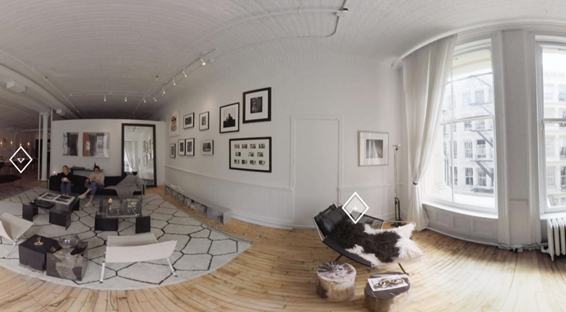Recently, I had the opportunity during our annual GDRCC Consumer Experience Symposium here at the University of North Texas to sit down for a conversation with Jon Panella, Head of Commerce Technologies for SapientRazorfish, and chat about virtual reality and some of the boundary-pushing innovation happening at key retail brands.
Linda Mihalick: Welcome to our campus. It is so valuable for supporters such as SapientRazorfish and Google to partner in our mission to advance digital retailing through academic and industry collaborations. So let’s dive in to this very interesting topic. You mentioned that retailers should leverage technology innovations that are currently available to extend consumer touchpoints in several ways. Could you elaborate on those?
Jon Panella: Yes, we have defined four key areas. The first we call creating Show-Worlds. This is the idea of a fully-immersive experience. Second, creating Immersive Product Experiences, since it’s about content for the customer. You must provide more information to the consumer than they previously had. Third, create the Social-Shopping Opportunities. Really make sure that the immersive environment allows customers to interact with their network. Last is making it about Discovery and Inspiration. The experience must lead the customer to either discovering something new or inspiring them to do something different.
Mihalick: You say that your company sees virtual reality as the next great canvas for retail, to be able to change the way they interact with consumers. Help us understand the different technology devices that are enabling these experiences. Where are we now and where are we headed?
Panella: That is a great question. We recognize that the devices themselves are at different points of maturity. A number of devices currently truly enable the experience and virtual reality adoption will double in 2017. But the next step is full adoption of VR. Unfortunately, many of our smartphones presently just don’t have the capabilities to support the VR experience. Regardless of this limitation, the bigger value down the road for the retailer will be the in-home device experience, leveraging our televisions and devices at home to shop.
Mihalick: Let’s talk about what the word experience means in the digital context.
Panella: The eCommerce shopping experience today is flat. People talk about it being currently rich, but really it is just an interaction. Retailers need to change the experience. eCommerce and the physical retail store have to merge. Virtual reality is a true experience, not just a flat website. It allows the customer to shop in a new type of world.
Mihalick: Retail is competitive and as we look to the future, it’s exciting to learn about retailers who are investing, experimenting and pushing the experiences for customers with technology. There is a lot being written about testing and failing fast, then adapting to what is learned. Tell us about some of the innovators you’re working with and what customer experiences they are creating.
Panella: Yes, L'Oreal is using augmented reality in their B to B environment, for instance where they are selling to salons. The next step is taking it to a direct to consumer experience. John Lewis in the UK has experimented in-store with creating a personal room. IKEA has an augmented reality experience allowing customers to test how furniture will look in their home. We have worked with Home Depot to develop their appliance finder in-store, allowing them to take up far less in-store real estate for floor models, as the customer uses the kiosk to get all the product information for comparisons and selection. We are testing the ability for the customer to then download the choices to their phone, go home and see what the refrigerator will exactly look like in their home, everything from color to size. Another client, Bed Bath & Beyond is looking to combine multiple augmented experiences. An example would be combining how the dining room table, tablecloth, dinnerware and glassware would look together in the home, with the potential they would purchase all. We also do a lot of work with Lenscrafters and Sunglass Hut. That whole type of product category is a great use of the technology, allowing customers to see how the glasses will look on their face.
Mihalick: These sound like great technology applications. Can you tell us about one that is more futuristic and give us some predictions where we’ll be seeing some of the technologies more commonly in retail?
Panella: We have a very interesting example. There is a small, boutique hotel in New York called The Apartment by The Line, where customers can buy everything. We worked with them to create a true virtual reality experience. You can walk through the entire apartment, look at items and get more information on any item by staring at it. If you want to purchase, you simply tap the side of your head, and add it to your cart. While in the early test stage, it has not sold large volumes of merchandise, however, it is demonstrating the capabilities that are possible and will become shopping reality. I predict within the next 18 to 24 months, we’ll see all major retailers implementing some examples of these technologies, allowing the customer to shop better at home. It will probably take 3 to 4 years for the smartphones that are enabled to handle a robust virtual reality application within the phone to reach a mass adoption level.


